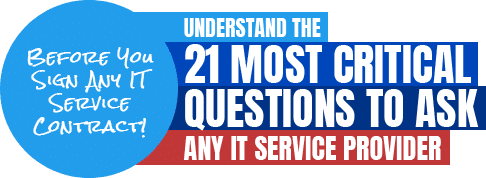
Despite the numerous initiatives businesses take to protect their data and systems from unheralded disasters, it’s clear that the status quo is unlikely to change any time soon. The Annual Outage Analysis 2023 report found that there are 20 – 30 serious high-profile outages globally.
Each outage is estimated to cost $100,000 – $10 million. For small and medium-sized enterprises, such financial losses can be irrecoverable. It is in these moments that businesses need a solid business continuity plan to keep mission-critical operations running.
What is Business Continuity Planning?
Unexpected disruptive events can strike at your business when you least expect it. One moment, your IT systems run without a hitch. In the next, you’re bustling to suppress unexpected issues that could cripple your entire network.
Every day, businesses face relentless cyberattacks, power failures, natural disasters, and human errors that could wreak havoc on critical operations. In particular, human error and management failure have been known to contribute significantly to unscheduled downtime.
Business continuity planning is a strategic process established for the prevention and mitigation of these disruptive events. For those events that could potentially grind core operations to a halt, IT managers will focus on:
- Risk identification and assessment
- Potential impact analysis
- Swift recovery strategies
- Regular maintenance
IT outages are projected to become more severe and expensive with increased dependency on IT services. Here are the key steps for successful business continuity planning:
1. Identify Your Risk Factors
Several factors come into play when developing and deploying your business continuity plan. These factors may fall within or outside your sphere of control. For example, hardware and software maintenance and updates are well within your reach. With regular maintenance, you can significantly minimize the risk that your IT network will fail mid-project.
Similarly, your cybersecurity strategy is well within your control. Leaving your infrastructure unprotected could lead to a catastrophic breach. At the same time, you want to take inventory of external risk factors beyond your reach.
These may include natural disasters and unplanned power outages. Third-party equipment may also fail due to errors in its manufacturing. Regardless, it’s important to weigh the overall impact of these potential risks and develop a strategy that conforms to your business’s needs.
Identify what’s necessary for your business. It’s imperative that you prioritize your business-critical resources. Once you’ve figured out your business’s risk portfolio, try to understand how sudden disruptions can affect these functions and how best to respond.
2. Staff Training and Awareness
The human element accounts for a significant number of IT challenges and business continuity planning is no exception. In some cases, failures can occur as a result of unnecessarily difficult-to-operate equipment, insufficient training, under-resourced teams, installation issues, and failure to follow standard procedure.
In several circumstances, 78% of business leaders believe that IT failures could be prevented with better management and more efficient processes.
First, develop a risk strategy that takes into account both internal and external risk factors facing your IT environment. Small businesses are particularly prone to crippling cybersecurity threats and hence need greater tactical agility in responding swiftly to emerging security threats. Larger organizations, on the other hand, are at constant risk of massive – and expensive IT downtime.
Understanding and communicating these risk elements to staff and other stakeholders creates the foundation for a successful business continuity strategy. Educate your staff on the key operations, core processes, and reporting protocols at their disposal during an IT outage or unexpected emergency.
An informed team goes hand in hand with a healthy IT management culture, where every team player shares in the responsibility for keeping the organization’s IT systems in good working order.

3. Invoke Professional Third Party Managed IT Service Help
It can be overwhelming to implement business continuity planning, especially while managing your business independently. That’s where an experienced managed IT service provider in Miami can step in. From helping you identify critical business functions to implementing failover systems and conducting regular tests, managed IT providers can guide you through every step of the way.
Business continuity planning may oftentimes drain valuable resources. Not to mention, a collaborative approach to IT management only works best when everyone on the team understands the organization’s IT environment. If these are not your company’s strongest areas, consider hiring a managed IT services provider for the role.
Managed IT services serve small and medium-sized businesses with scalable expertise and resources without the hurdles of hiring additional staff. They can help your existing IT staff analyze your company’s risk portfolio and develop strategies to keep operations going during disruptive events.
4. Seek Stakeholder Buy-In and Managerial Support
Lack of managerial and top-level support could undermine the successful development and deployment of your business continuity plan. For starters, under-resourced teams are less likely to build and implement swift recovery policies without the resources and labor extended to them with managerial support.
Besides, developing a business continuity plan is not a one-person job. With top-level support, resources can be allocated to meet your organization’s business continuity plan. Team players from other departments across your organization can be incorporated into the planning phase so all departments are represented.
5. Focus on Continuous Improvement
Technical problems can surface at any time. Make it a standard practice to regularly scan your IT environment for potential system issues. From time to time, make deliberate efforts to gather input from your staff and customers to improve your response strategy (especially after a disruptive event).
Regularly train your staff to improve team preparedness through simulated mock scenarios. These will help you test your average response time and communications success, should a real disruptive event cut off vital communication lines.
Leverage the latest tech at every opportunity to build stronger defenses for your business data. For example, the cloud and cloud-based storage and processing infrastructure provide safe and efficient avenues for quick system and data restoration in the event of a disaster.
Conclusion
It’s worth pointing out that business continuity plans are not one-size-fits-all. The specifics will vary from organization to organization, based on industry, size, and needs. All in all, strive to develop and regularly update your business continuity plan to protect critical operations from stalling, keep your customers happy, and prepare adequately for unforeseen adverse effects.
Need a hand with business continuity planning? At BoomTech, we provide advanced skill sets and resources to keep your business going in the event of a disaster. Ready to get started? Schedule your free consultation with us.
Categories
Hear from Philipp Baumann, owner and founder of BoomTech:


